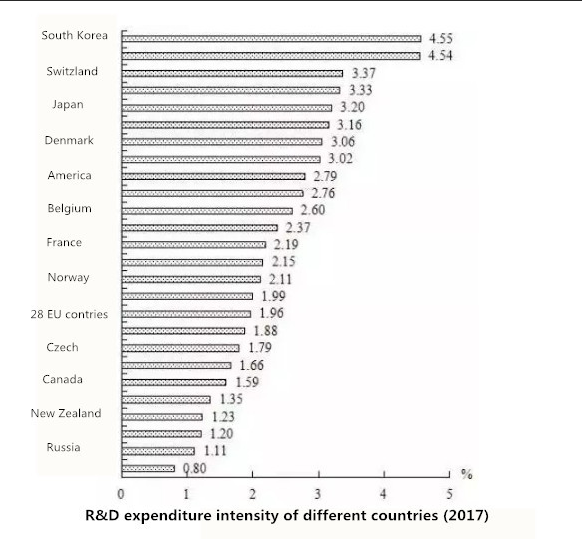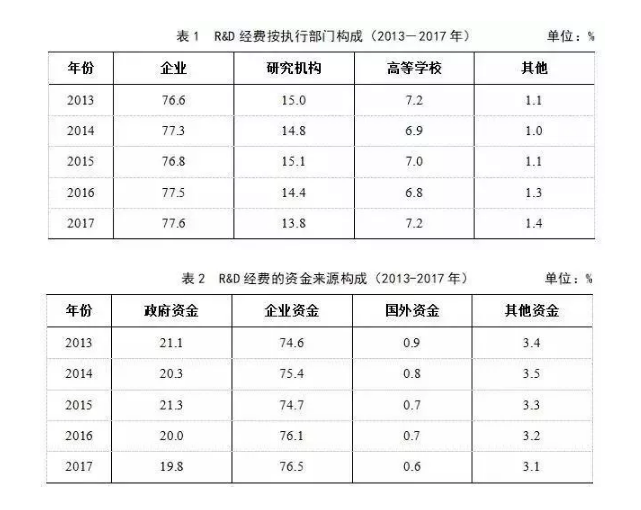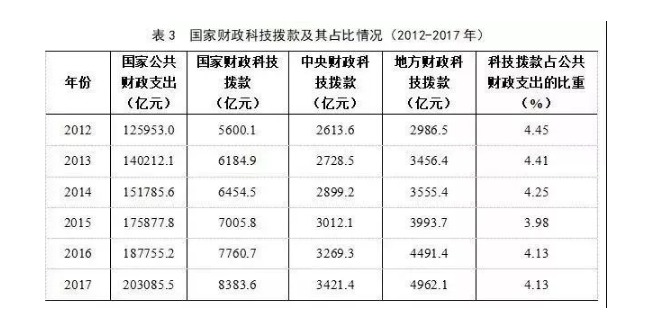China ranks second in R&D funding
China's total R&D expenditure was 1.76 trillion yuan($262.29 billion) in 2017, ranking second in the world, according to a recent report "Analysis of Characteristics of China's R&D Investment" launched by the Ministry of Science and Technology.
The report shows that China's total R&D expenditure reached 1.76 trillion yuan in 2017, second only to the United States. The R&D expenditure intensity reached 2.15 percent, an increase of 0.03 percentage points over 2016.
Among them, corporate R&D investment was 1.36 trillion yuan, accounting for 77.6 percent of the total social R&D expenditure. The national financial science and technology appropriation reached 838.36 billion yuan, accounting for 4.13 percent of the national public finance expenditure.

R&D investment intensity continues to increase
In 2017, China's total R&D expenditure was 1.76 trillion yuan, an increase of 192.94 billion yuan, 12.3 percent over the previous year. It was converted to $260.41 billion at the average exchange rate of the year, ranking second in the world.
In recent years, the intensity of R&D expenditures in China has been increasing on a yearly basis. In 2017, China's R&D expenditure intensity amounted to 2.15 percent, an increase of 0.03 percentage points over the previous year and an increase of 0.44 percentage points over 2010. China's R&D investment intensity has exceeded 2 percent for four consecutive years, showing a continuous upward trend.
From an international perspective, China's R&D investment intensity has surpassed the average 1.96 percent of the EU's 28 countries, reaching the R&D expenditure intensity of moderately developed countries, but it still lags behind compared to the intensity of 2.5 percent to 4 percent in some developed countries.
In general, China's R&D expenditures are in line with the basic requirements and stages of China's economic and social development.

In terms of the R&D activity type, the basic research funding in China reached 97.55 billion yuan in 2017, the applied research funding was 184.92 billion yuan, and the experimental development expenditure was about 1.48 trillion yuan, accounting for 5.5 percent, 10.5 percent and 84 percent of the total R&D expenditure, respectively.
The characteristics of R&D activities can be seen from the distribution of the activity types of R&D funds among different departments.
In 2017, 15.8 percent of R&D expenditures in research institutions were used for basic research, 28.7 percent for applied research, and 55.5 percent for experimental development.
The ratio of funds for the three types of activities in higher-learning education institutions is about 4:5:1; of which, 91.2 percent is for scientific research and 8.8 percent for experimental development.
R&D activities of enterprises are primarily focused on experimental development, which accounts for 96.6 percent of the total corporate R&D investment. Besides, application research funds account for 3.2 percent, and basic research funds only account for 0.2 percent.
Dominant position of enterprises in R&D investment
In 2017, corporate R&D investment in China reached 1.366 trillion yuan, accounting for 77.6 percent of all R&D expenditures. From the perspective of the funding sources of R&D funds, enterprises still play a predominant role, with a proportion of 76.5 percent.

The proportion of national financial science and technology appropriation of national public financial expenditures remain same as the year before
With the Chinese government continuously increasing its investment in scientific and technological innovation, the state financial science and technology allocation continues to maintain rapid growth.
The national financial science and technology allocation reached 838.36 billion yuan in 2017, accounting for 4.13 percent of the national public finance expenditures, which was the same as the previous year.
In 2017, the central government's science and technology allocation amounted to 342.14 billion yuan, and the local financial science and technology allocation reached 496.21 billion yuan, accounting for 40.8 percent and 59.2 percent of the fiscal science and technology allocation respectively.
The science and technology appropriation of the central government increased by 4.7 percent over the previous year, while that of the local government grew by 10.5 percent.
